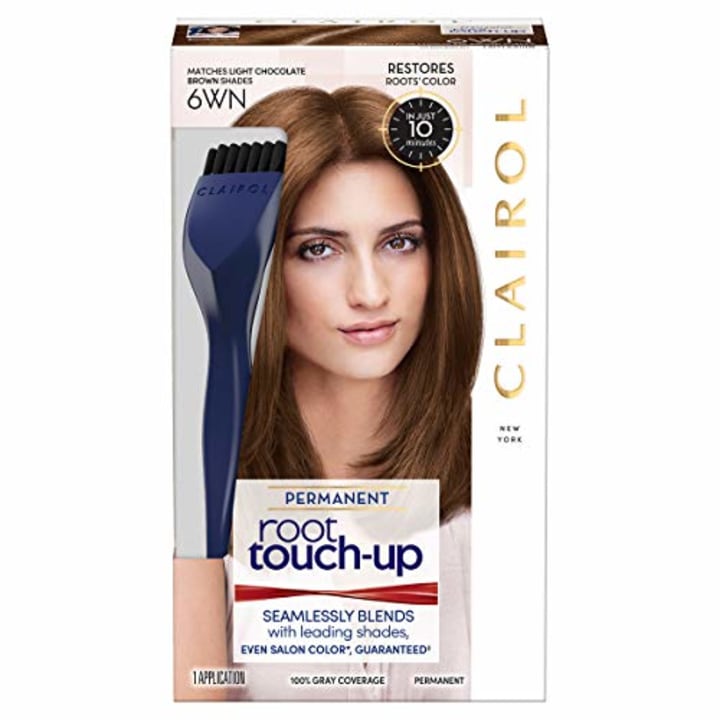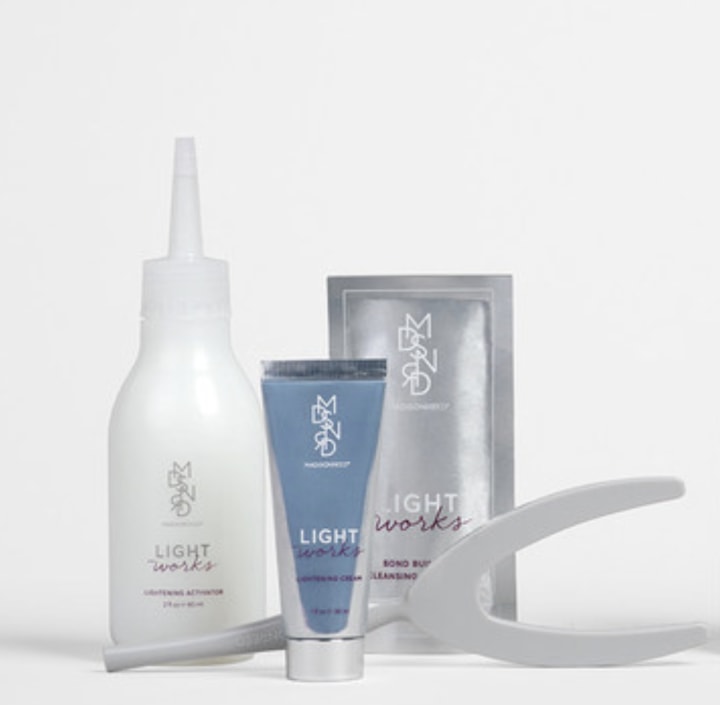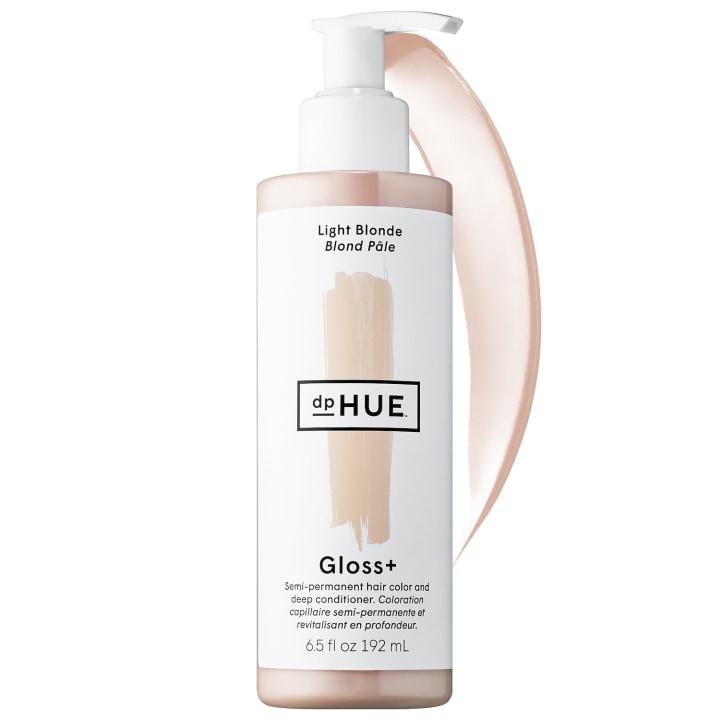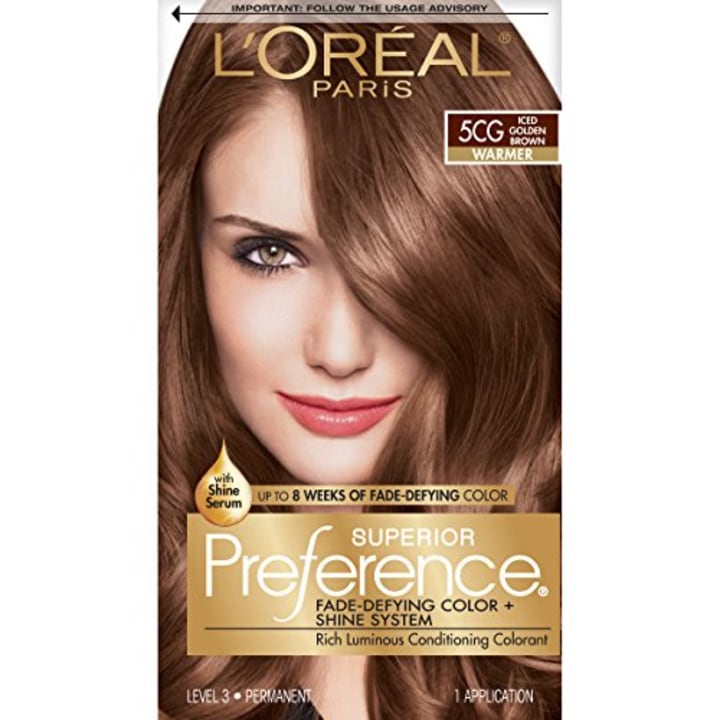How to Make at-home Hair Color Kit
In the last month alone, online searches for hair color have nearly doubled, according to data from Google. One reason for that might be that businesses around the country, including salons, have closed their doors. Though coloring your hair may not be essential or necessary, indulging in self-care like hair, skin and nail grooming may brighten your overall mood at home.
If you're ready to make the commitment to coloring your hair at home, you'll soon find yourself figuring out which hair color kit to get. With so many products on the market — from touch-up kits to leave-in treatments — finding the right product can be a frustrating process: Everyone's hair texture, density and color are unique. We consulted stylists, hairdressers and salon specialists to learn more about the best way to approach at-home coloring, including how to shop for your hair type and tips on some solid hair coloring products to consider. Whether you're just starting out or you're looking for some additional tips to use for your hair routine, we laid out everything you need to know about coloring to get you by until your next appointment.
In this article
- Is it okay to color your hair at home?
- How to choose the right color
- How to shop for hair dye kits
- Hair dye safety tips
- Best hair color kit overall
- Best hair color kit for beginners
- Best affordable hair color kit
- Best hair color kit for highlights
- Best hair color kit for a major color change
Is it okay to color your hair at home?
Though dyeing your hair from the comfort of your own bathroom might be possible, some stylists suggest you practice brutal honesty about your coloring comfort level. Cash Lawless, a celebrity stylist, suggests talking to your regular colorist to make sure you have someone to advise you throughout the process. "If your stylist is taking care of formulation and agrees that the application techniques can be done at home, then you do not have to be very experienced as they will be there walking you through it," he noted.
If you can't consult a colorist, you may need to take additional precautions like paying close attention to color shade, as well as clearly defining your coloring goals. Envision what you want out of a coloring treatment and how you want your outcome to look — whether that be an all-over color, a root touch-up or a gradual highlight. "We need to look and feel our best whilst in front of the camera," said AJ Lordett, color director for the Frederic Fekkai Salon in New York City. "Some of us just need a pick-me-up and getting rid of those grays will certainly help,"
Experimenting with color for the first time? Garnier colorist Nikki Lee recommends doing simple coloring applications and avoiding drastic modifications. "Simple root touch-ups are fine to do at home as long as you can match your color correctly," said Lee, who's consulted Britney Spears and Heidi Klum, among other celebrities. "If you're trying to do a color change, that can become difficult and leave you unhappy with your end results."
How to choose the right color
Stephanie Brown, master hair colorist at IGK SoHo, suggests a humble approach. "Stay with a neutral color, unless you are a redhead — then, obviously, look at the warmer colors. If you are unsure of a lighter or darker color, choose the darker one or mix the boxes together. It's better to be slightly darker than have your roots be lighter."
How to shop for hair dye kits
Not all hair color kits are created the same — and our experts made note of some ingredients you should look for and others to avoid while shopping for at-home color products.
Hair dye ingredients to seek
"You want to look for products that have beneficial ingredients in their formulas like avocado, shea butter, and olive oil, or essentially any kind of oil that is going to give your hair the nourishment it needs when coloring," said Streicher.
You'll also want to consider the effectiveness of the color in addition to the active ingredients. "The hardest part of hair color is finding a balance between questionable chemicals and an effective hair-dye," said Lordett. She recommends doing a patch test (a drop on your arm) to ensure you won't have an allergic reaction to the ingredients.
Hair dye ingredients to avoid
Joshua Zeichner, MD, dermatologist and director of cosmetic and clinical research at the Department of Dermatology at Mount Sinai Hospital, notes hair dyes can be cosmetically helpful but also cautions they may cause skin reactions via direct irritation or allergies. Zeichner specifically highlighted a common permanent dye ingredient called paraphenylenediamine (PPD) that might bring on "allergic contact dermatitis."
"The ingredient causes an immune response leading to skin inflammation and irritation," he said. "If you develop the allergy, you will have a reaction every time you use the product." If you have a known sensitivity to PPD or you find that it irritates your skin, Zeichner recommends using a henna-based dye.
Zeichner also noted ammonia might irritate skin, "leading to dryness and inflammation." He added that hair dyes contain varying concentrations of peroxide — a developing agent to deposit color on the hair — and that those can increase your risk of skin irritation given high enough levels of concentration.
Hair dye kit safety tips
Lordett's recommendation to run a patch test is actually the first step in a list of precautions that the Cleveland Clinic suggests you practice, noting you should always "closely follow all instructions that come with your boxed hair dye." Here are those recommendations:
- "Rule out possible allergic reactions" with a patch test.
- When you're applying or mixing the hair dye, "wear gloves."
- Pay attention to instructions and avoid leaving dye on your hair for longer than the suggested time.
- "Rinse your hair well" after you're finished.
- "Don't mix different hair color formulations."
- Avoid dyeing eyelashes or eyebrows with hair dye — it "can damage your eyes permanently and could even cause blindness."
If you're worried about potentially harmful chemicals in your hair dye, Zeichner says you can minimize irritation by avoiding direct contact between the dye and your skin. He recommends using petroleum jelly to protect your hairline or scalp, for example.
Best at-home hair color and hair dye kits
Our experts considered some of the best hair color kits on the market and shared a few with us. Read on to learn more about how you can successfully color your hair at home.
Best hair color kit overall: Garnier
1. Garnier Nutrisse Nourishing Hair Color Creme
The Garnier Nutrisse Hair Color Creme is formulated with a blend of shea oil, olive oil, avocado and fruit oil concentrate, designed to penetrate into hair fibers to hold color for a longer period of time. Lee recommends the all-inclusive kit, which comes with a creme developer, nourishing color creme, fruit oil ampoule and a conditioner. "It has the most selection of colors and the formulas are nourishing to the hair," said Streicher.

Best hair color kit for beginners: Clairol
2. Clairol Permanent Root Touch-Up
If you're looking for a simple root touch-up, Lordett recommends using the Clairol Permanent Root Touch-Up kit. The box includes a permanent cream, an activating lotion, a brush to apply the color and a bowl to mix the products. According to the brand, the application takes around 10 minutes and the color can last up to three weeks. It also comes in 30 colors so you have more options to find one that matches the color you wish to achieve.

Best hair color kit for highlights: Madison Reed
3. Madison Reed Light Works
Madison Reed products are free of potentially harmful chemicals like ammonia, parabens, sulfates and more. Instead, they are formulated with argan oil, keratin, ginseng root extract and oils that promote healthy hair and growth. The Light Works kit is designed so you can give yourself highlights at home and the kit includes a bond-building cleansing treatment, a wishbone applicator, a lightening cream and a toning glaze. The wishbone applicator is a tool that helps hair color blend into your natural hair. The toning glaze is also unique in that it helps remove brassy tones — like yellow or orange — after a coloring session. Brown adds that the brand works well on all hair types. "They help you choose as close to the right color as you can by asking a lot of questions," she said, referring to the online quiz.

Best hair color kit for a major color change: dpHUE
4. dpHUE Gloss+ Semi-permanent Hair Color
Brown advises using the dpHUE permanent hair color if you're looking to color your entire head of hair. It effectively provides semi-permanent color to straight, wavy, curly and coily hair and increases vitality of the hair according to the brand.

Best affordable hair color kit: L'Oreal
5. L'Oreal Superior Preference Hair Color
This permanent color is formulated with camelina seed oil and antioxidants for silkier hair. According to the brand, the color can last for up to eight weeks. "The dye is a good consistency so it's easy to apply and the product covers well and lasts," said Lordett, adding it's "well-priced and good quality."

More shopping guides and recommendations
- The best hair and beard trimmer for men, according to experts
- Working remote? These last-minute tech accessories might help
- Drink more water with these 9 smart products
- TV Buying Guide: How to choose the best television 2020
Catch up on the latest from NBC News Shopping guides and recommendations.
Download the NBC News app for full coverage of the coronavirus outbreak.
How to Make at-home Hair Color Kit
Source: https://www.nbcnews.com/select/shopping/best-hair-color-hair-dye-kits-ncna1189986